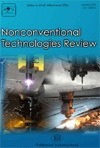INFLUENCE OF LASER WAVELENGTH TO NANOPARTICLES GENERATION
Abstract
The influence of laser wavelength on laser ablation in liquids (LAL) is a critical factor in determining the efficiency, quality, and characteristics of nanoparticle generation. In LAL processes, varying the laser wavelength impacts the absorption efficiency of both the target material and the surrounding liquid, which in turn influences the thermal and mechanical effects responsible for nanoparticle formation [1]. Shorter wavelengths, often in the ultraviolet (UV) and visible range, generally lead to higher photon energy, enhancing photon absorption and improving ablation efficiency. This results in the generation of smaller, more homogeneous nanoparticles [2]. Conversely, longer wavelengths, such as those in the infrared (IR) range, are less absorbed by many materials and liquids, often producing larger particles with broader size distributions [3]. The selection of wavelength also affects secondary processes such as bubble formation, shockwave propagation, and plasma plume dynamics, which play significant roles in particle size, morphology, and composition [4]. Recent research has shown that tailoring the laser wavelength to the specific optical properties of the target and the medium allows for precise control over nanoparticle characteristics, which is crucial for applications in fields like biomedicine, catalysis, and electronics. This review summarizes the latest studies on the role of laser wavelength in LAL, highlighting the mechanisms of wavelength-specific interactions and their impact on nanoparticle properties.
References
2. Tsuji, T., Yoon, S.-H., Tsuji, M., et al. Effects of laser wavelength on size distributions of colloidal silver nanoparticles prepared by laser ablation in aqueous solutions. Applied Surface Science, 254(16), 5224-5230, (2007).
3. Semaltianos, N. G. (2010). Nanoparticles by laser ablation. Critical Reviews in Solid State and Materials Sciences, 35(2), 105-124.
4. Barcikowski, S., Menéndez-Manjón, A., Chichkov, B., & Hartmann, T. Laser ablation in liquids: A powerful tool for producing nanoparticles. Journal of Laser Applications, 21(2), 83-93, (2009).
5. Yang, G. W. Laser ablation in liquids: Applications in the synthesis of nanocrystals. Progress in Materials Science, 52(4), 648-698, (2007).
6. Zeng, H., Cai, W., Liu, P., Xu, X., & Yang, G. W. (2007). Nanomaterials via laser ablation/irradiation in liquid: A review. Applied Surface Science, 253(17), 6872-6880.
7. Amendola, V., & Meneghetti, M. (2009). Laser ablation synthesis in solution and size manipulation of noble metal nanoparticles. Physical Chemistry Chemical Physics, 11(20), 3805-3821.
8. Fazio, E., Gökce, B., & Amendola, V. (2015). Nanoparticles engineering by pulsed laser ablation in liquids: Concepts and applications. Optik - International Journal for Light and Electron Optics, 127(15), 7096-7101.
9. Zeng, H., et al. (2013). "Nanomaterials via Laser Ablation in Liquids: A Review." Advanced Functional Materials, 24(5), 693–710.
10. Sylvestre, J.-P., et al. (2004). "Synthesis and Stabilization of Silver Nanoparticles via Laser Ablation in Liquids." Journal of the American Chemical Society, 126(23), 7176–7177.
11. Tsuji, T., et al. (2008). "Laser-Induced Nanoparticle Formation in Liquids for Metal and Metal Oxide Systems." Applied Surface Science, 254(16), 5224–5230.
12. Kumar, V., et al. (2010). "Laser Ablation in Liquid: A Novel Method for Nanomaterials Synthesis." Current Science
13. Bulgakov, A. V., & Ozerov, I. (2010). "Laser-Induced Nanoparticle Formation via Ablation in Liquids." Chemical Physics Letters, 487(4–6), 274–278.

